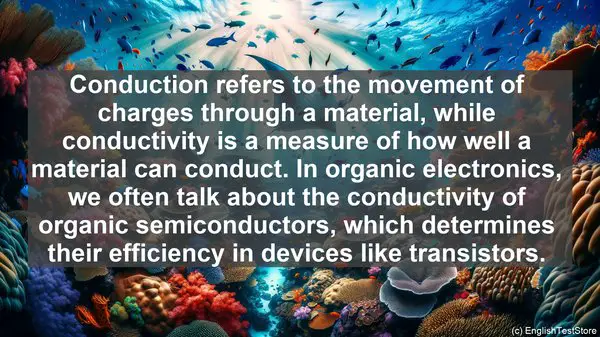Introduction to Organic Electronics
Before we delve into the confusing words, let’s have a brief introduction to organic electronics. It’s a branch of science that focuses on using organic materials, such as carbon-based compounds, for electronic applications. These materials have unique properties, making them ideal for flexible displays, solar cells, and more.
1. Conduction vs. Conductivity
Conduction refers to the movement of charges through a material, while conductivity is a measure of how well a material can conduct. In organic electronics, we often talk about the conductivity of organic semiconductors, which determines their efficiency in devices like transistors.
2. Doping vs. Blend
Doping involves intentionally adding impurities to a material to alter its electrical properties. On the other hand, a blend is a mixture of two or more materials, often used to enhance the performance of organic solar cells or LEDs.
3. Efficiency vs. Stability
Efficiency refers to how well a device converts input energy into the desired output, like the conversion of light into electricity in a solar cell. Stability, on the other hand, is the ability of a device to maintain its performance over time, without degradation.
4. Heterojunction vs. Homojunction
A heterojunction is formed when two different materials meet, creating an interface with unique properties. In contrast, a homojunction is formed when two regions of the same material come together. Both types of junctions play important roles in organic electronic devices.
5. Mobility vs. Conductivity
Mobility is a measure of how easily charges can move through a material, while conductivity is a measure of how well it can conduct. In organic semiconductors, high mobility is desirable for efficient charge transport, leading to better device performance.

6. Recombination vs. Dissociation
Recombination occurs when charges, like electrons and holes, combine, leading to a loss of current. Dissociation, on the other hand, is the separation of charges, often seen in organic photovoltaics, where light-generated charges need to be dissociated to produce electricity.
7. Substrate vs. Electrode
A substrate is the underlying material on which a device is fabricated, providing mechanical support. An electrode, on the other hand, is a conductive material used to transport charges into or out of a device. Both are crucial components in organic electronics.

8. Bandgap vs. Energy Level
The bandgap is the energy difference between the highest occupied and lowest unoccupied energy levels in a material. It determines the type of light a material can absorb or emit. Energy levels, on the other hand, refer to the specific energy states of electrons in a material.
9. Luminance vs. Radiance
Luminance is the amount of light emitted or reflected by a surface, often measured in candelas per square meter. Radiance, on the other hand, is the amount of light emitted in a particular direction. Both are important parameters in the characterization of organic displays.
10. Work Function vs. Ionization Potential
The work function is the minimum energy required to remove an electron from a material’s surface. It’s often used to describe the energy level alignment at interfaces. The ionization potential, on the other hand, is the energy required to remove an electron from a single isolated atom.
